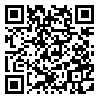Sat, Jul 27, 2024
[Archive]
Volume 11, Issue 2 (6-2019)
itrc 2019, 11(2): 49-61 |
Back to browse issues page
Download citation:
BibTeX | RIS | EndNote | Medlars | ProCite | Reference Manager | RefWorks
Send citation to:



BibTeX | RIS | EndNote | Medlars | ProCite | Reference Manager | RefWorks
Send citation to:
zekrizadeh N, khademzadeh A, Hosseinzadeh M. LABTS: a Learning Automata-Based Task Scheduling algorithm in cloud computing. itrc 2019; 11 (2) :49-61
URL: http://ijict.itrc.ac.ir/article-1-372-en.html
URL: http://ijict.itrc.ac.ir/article-1-372-en.html
1- Department of Computer Engineering, Science and Research Branch, Islamic Azad University, Tehran, Iran
2- Iran Telecommunication Research Center (ITRC) ,Tehran, Iran ,zadeh1.itrc.ac.ir@gmail.com
3- Iran University of Medical Sciences ,Tehran, Iran
2- Iran Telecommunication Research Center (ITRC) ,Tehran, Iran ,
3- Iran University of Medical Sciences ,Tehran, Iran
Abstract: (1643 Views)
Task scheduling is one of the main and important challenges in the cloud environment. The dynamic nature and changing conditions of the cloud generally leads to problems for the task scheduling. Hence resource management and scheduling are among the important cases to improve throughput of cloud computing. This paper presents an online, a non-preemptive scheduling solution using two learning automata for the task scheduling problem on virtual machines in the cloud environment that is called LABTS. This algorithm consists three phases: in the first one, the priority of tasks sent by a learning automaton is predicted. In the second phase, the existing virtual machines are clustered according to the predictions in the previous phase. Finally, using another learning automaton, tasks are assigned to the virtual machines in the third phase. The simulation results show that the proposed algorithm in the cloud environment reduces the value of two parameters makespan and degree of imbalance.
Type of Study: Research |
Subject:
Information Technology
Send email to the article author
| Rights and permissions | |
 | This work is licensed under a Creative Commons Attribution-NonCommercial 4.0 International License. |




